The Melodic Minor Scale. Sometimes referred to as the Jazz Minor, this scale and its modes are commonly used in jazz and bebop. However with a little understanding of the construction of these modes, it can become an invaluable writing tool for rock, metal and modern prog. We’ve found The Melodic Minor Modes to be an inexhaustible source of new ideas that yields all kinds of mysterious and ‘outside’ type sounds.
In this lesson we’re going to look at the basic forms of the 3nps Melodic Minor Modes. This will give you a quick and introductory way to use and understand the sound of each mode. However we would highly encourage you to use the interval visual system to break away from box patterns entirely. This will enable you to really understand the guitar neck to play though any scale or mode all over the neck without reliance on box patterns. A deep understanding of intervals allows for ultimate mastery of the guitar. Let’s now take a look at the Melodic Minor Scale and its modes in basic 3nps format.

Contents for This Lesson:
Here are some of the topics you’ll learn about in this lesson. Use the links below to jump to the section of interest within this lesson.
Understanding Interval Formulas
In order to understand any new scale, mode, arpeggio or chord you absolutely must understand its formula. The formula is series of intervals that makes up the the ‘blueprint’ for the scale. Every scale, chord or arpeggio you ever play will have its own unique formula that makes up the unique characteristics of that sound. With some basic analysis, the formula also tells you what additional sounds and harmony can be derived from each mode. We’ll show you how to do this in other extended mode lessons, so stay tuned! Preferably E A D G B E.

Visualising The Melodic Minor Modes
There are many different approaches you can take in order to visualise the Melodic Minor Modes across the guitar neck. It’s a personal approach, so don’t feel like there is a right or wrong way. You need to figure out what works best for you in terms of referencing and remembering the modes. In this lesson we’re looking at the standard 3nps box shapes. However if you really have a solid grasp of intervals then internalising formulas is by far a better way to go.
One way to look at new modal families such as the Melodic Minor modes is to understand the subtle differences between the mode you’re learning and one that you are hopefully already familiar with. This is why the modes of Melodic Minor are named the way they are.
Referencing Modes You Already Know
For example lets look at the 2nd mode of the Melodic Minor Scale, the dorian b2 mode. On the assumption you know your intervals, you could say, I’ve already internalised the dorian mode (2nd mode of the major scale) and I also know where all the b2’s are in comparison to a root note, then I can simply adjust my visualisation methods to account for this new formula.
Personally, we like to treat everything as it’s own unique sound and so internalising formulas isn’t too much of an issue. If you really stick with it, it will become second nature.
Melodic Minor Scale Intervals

The intervals of the melodic minor scale are as follows. Root, major 2nd, minor 3rd, perfect 4th, perfect 5th, major 6th and major 7th. Like both the major scale and the harmonic minor scale, this is known as a ‘parent scale’ of which six other ‘modes’ can be derived from each note of the scale. Again, just like this parent scale, each mode will have its own unique formula which we will look at further on.
Dorian b2 Intervals

Dorian b2 is as the name suggests, most like the dorian mode (second mode of the major scale) but with a flat 2nd interval instead of a major 2nd interval. If you’re particularly observant, this mode also has a very similar formula to the Phrygian Mode but with a major 6th degree. You could think of it either way.
Lydian Augmented Intervals

The Lydian Augmented mode is interesting because we now have a #4 AND a #5 interval. This means that power chords are not possible from the root of this mode. We label this as #5 because we have a major 6th interval in the scale already. As a general rule you try to avoid having two of the same intervals within the scale such as a b6 and normal 6th. By using #5 we get over this issue. This is called and ‘enharmonic’ note.
Lydian Dominant Intervals

The Lydian Dominant Mode can be named either Lydian b7 or Lydian Dominant. In terms of referencing other modes you can either consider this a Lydian Mode with a flattened 7th or you you could think of this as Mixolydian with a raised 4th. In the case of Lydian Dominant we need to name the #4 as #4 instead of b5 to avoid having two types of fifth in the mode. This means this mode has a sharp scale degree and a flat scale degree.
Mixolydian b6 Intervals

Mixolydian b6 is another Dominant mode of the Melodic Minor Scale. In terms of alterations to scales you already know it’s easiest to think of this mode as mixolydian with a flat sixth. This mode is particularly interesting because we now have two dominant modes in a row. This alone can yield some creative and interesting musical possibilities within Melodic Minor.
Locrian #2 Intervals

Locrian #2 is as the name suggests, like a normal Locrian mode but with a major second interval. Alternatively you can also visualise this scale as the Aeolian mode but with a flat fifth instead. You should approach new scales in the way that makes most sense in your own mind. The unique quality of this mode means that, among many other things, you can derive a minor7b5 chord and arpeggio from it.
Altered Mode (aka Super Locrian) Intervals

This mode is named ‘Altered’ because literally every note has been altered in some way. Every note has been flattened. It’s the ‘flat everything’ mode. It unusual to see a flat fourth but we do this to avoid having both types of third in the interval spelling. A flat fourth is enharmonically a major third. Again, among many other chords and apeggios that are possible from this mode, the obvious one is yet another minor7b5.
If you now look back through the modes of melodic minor you’ll see that we have two dominant 7ths a whole step apart and then right after, two minor7b5s a whole step apart. There are so many ways you could use this creatively!

More Melodic Minor Scale Lessons
That it for this one folks. We’re at the tip of the iceberg with these ideas so check out these other lessons we’ve done for Maximum Melodic Minor Mastery!
eBook Download for Syndicate Patreon Members
Strings of Rage™ syndicate member patrons can download the Melodic Minor eBook that covers this entire lesson and more.


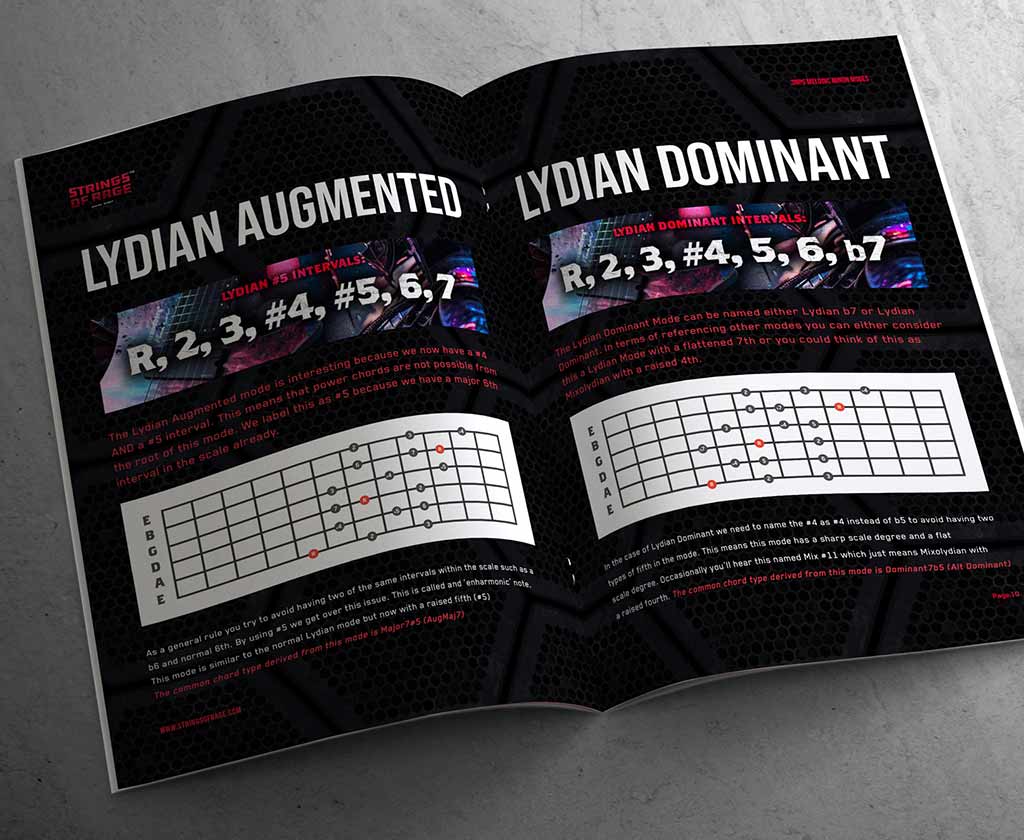
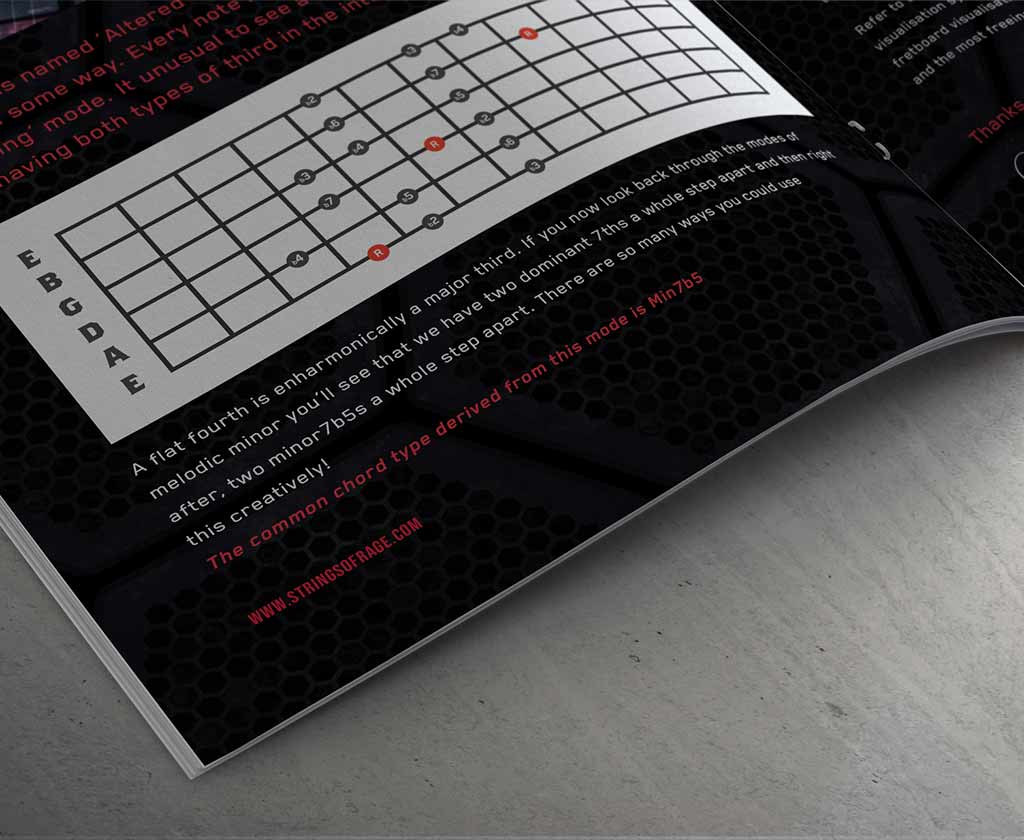


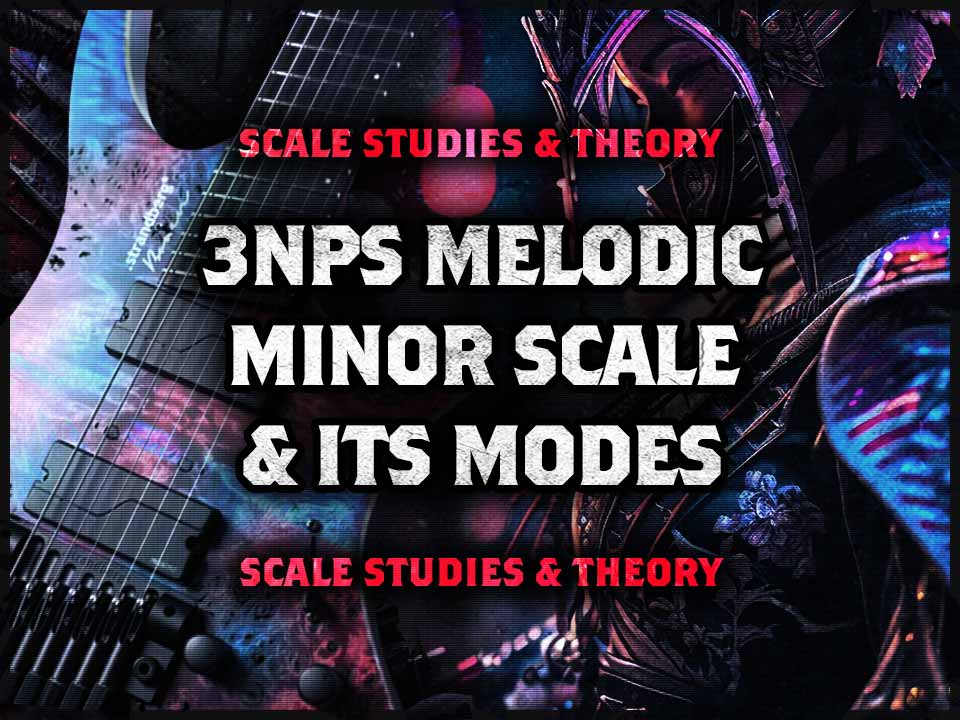

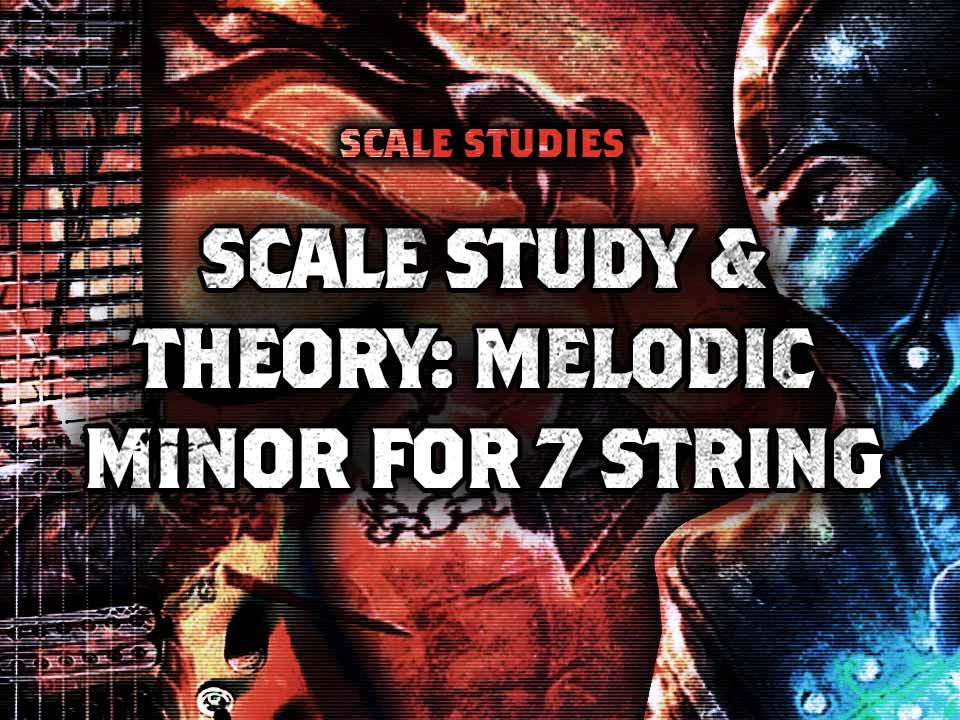
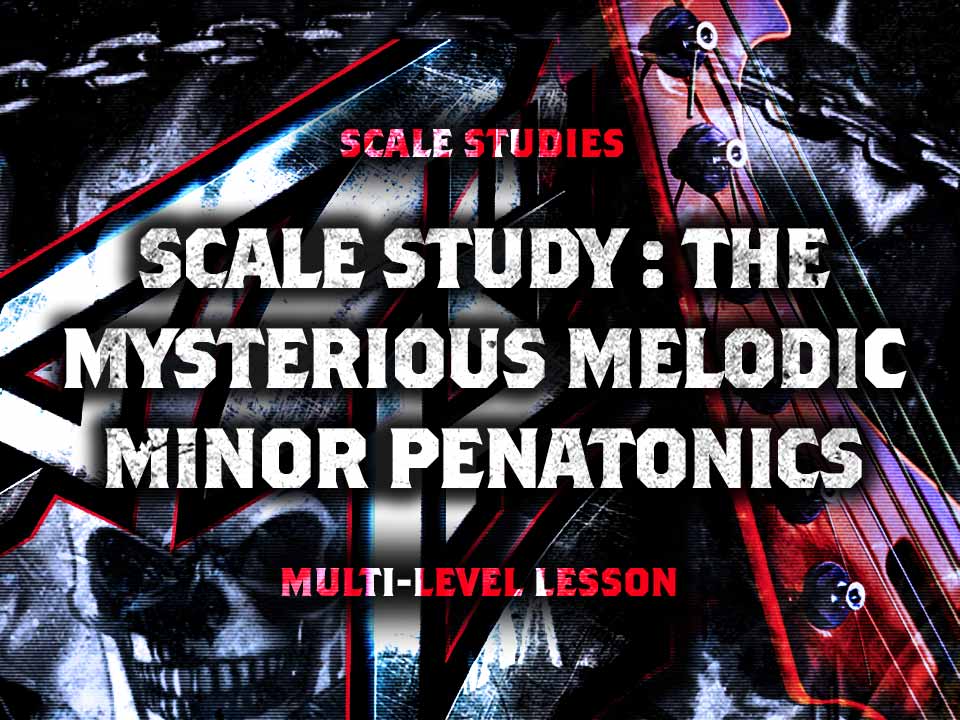
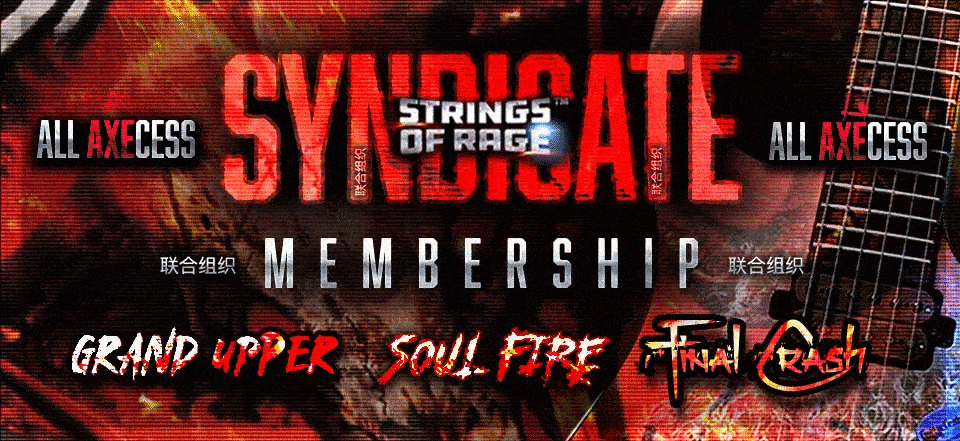
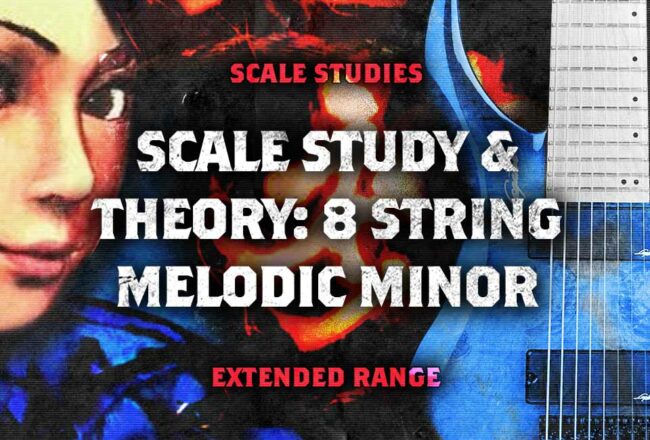
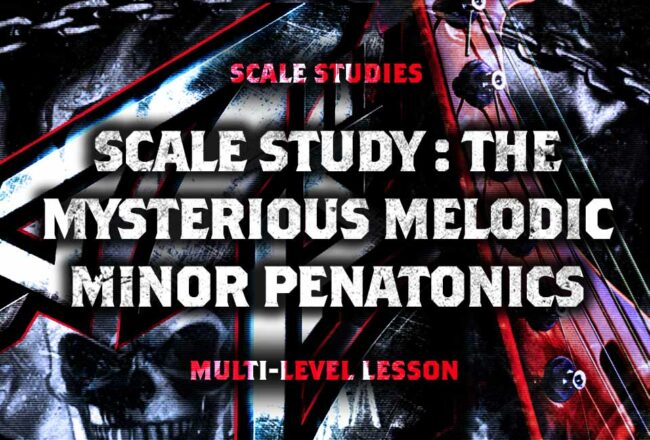
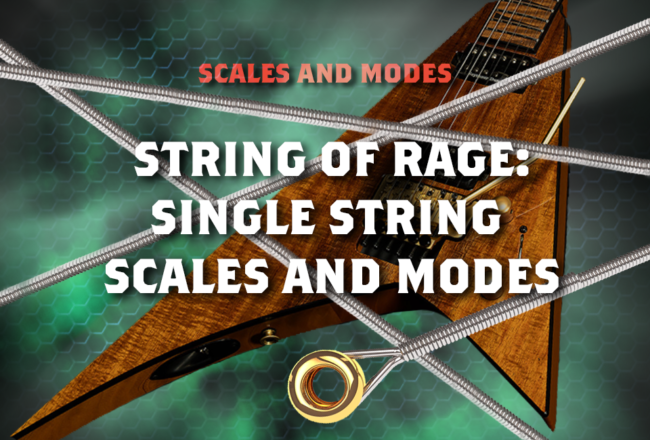






No Comment